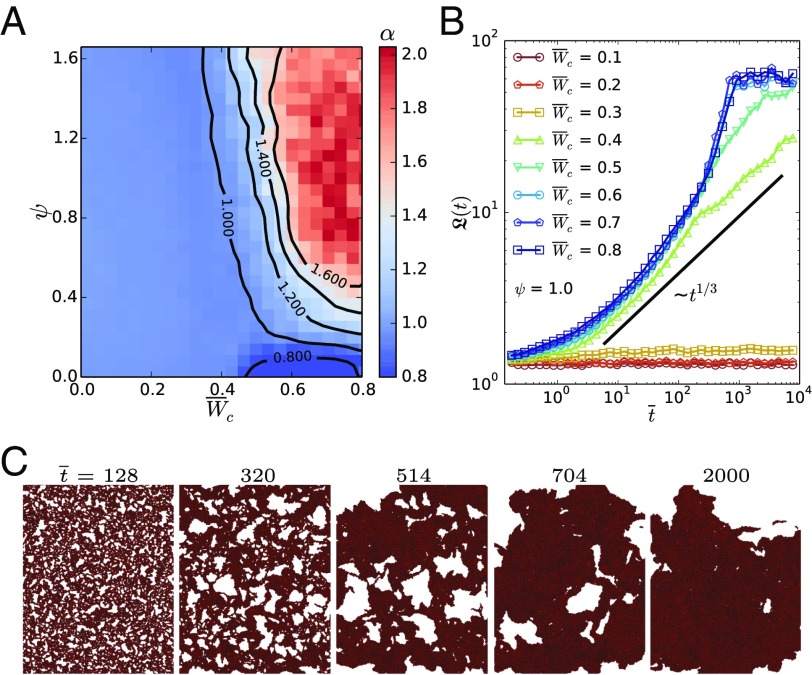Fig. 4.
Dynamics and phase-separation kinetics in cell colonies. (A) MSD exponent as a function of cell–cell adhesion and CIL repolarization rate . The colony forms a gel-like network with subdiffusive dynamics () at low . Faster CIL gives rise to collective cell motion, indicated by almost ballistic dynamics (). (B) Evolution of the average domain size , computed from the structure factor (SI Appendix), for different at . Dimensionless time reads . The colony phase separates for . CIL yields faster phase-separation kinetics than the diffusive coarsening dynamics of passive systems, for which (33). (C) Illustration of the phase separation from an initial random configuration toward the active polar liquid at and .

